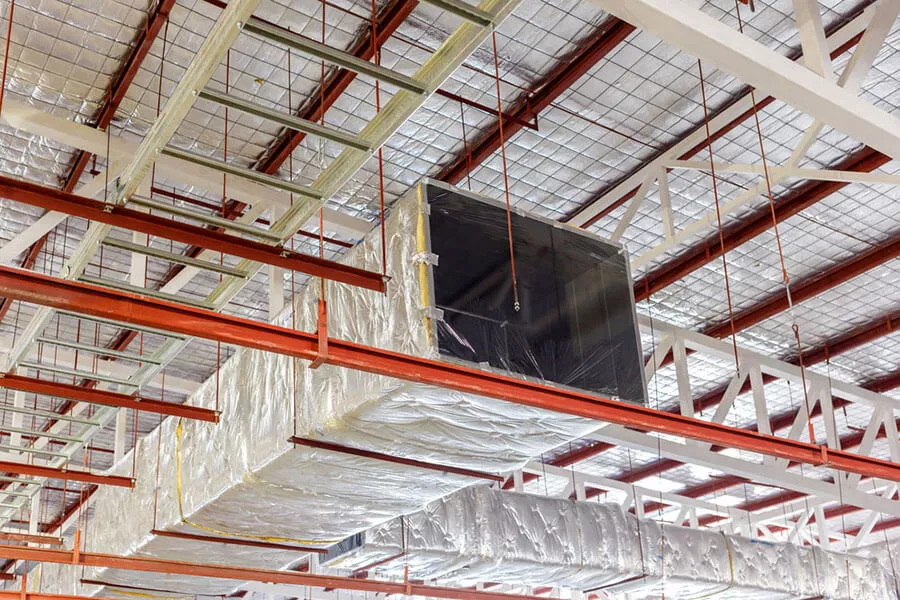
Frequently Asked Questions About Insulated Metal Building
Insulated metal buildings are a prevalent choice for various applications, from commercial and industrial facilities to storage buildings. However, many people have questions about these structures, from how they are constructed to their energy efficiency and lifespan. This article will answer your questions and help you understand the benefits and challenges of these insulated metal buildings.
What is an insulated metal building?
Insulated metal buildings are structures made from pre-engineered metal components designed and manufactured in a factory. These components include steel frames, roof and wall panels, doors, windows, and insulation. The building components are designed to be easily assembled on-site, making them a cost-effective and efficient option for construction projects.
What types of insulation are available for metal buildings?
There are different types of insulation, but here are the top three:
Fiberglass insulation: This is a popular option for insulating metal buildings. It consists of fine glass fibers that are spun into a mat or blanket and can be installed between the metal panels.
Spray foam insulation: This type of insulation is applied as a liquid and expands into a foam that fills gaps and crevices in the building envelope. It provides an airtight seal and can be sprayed onto the interior or exterior of the metal panels.
Reflective insulation: Reflective insulation is a type of insulation that works by reflecting heat rather than absorbing it. It typically consists of a layer of foil or other reflective material attached to a fiberglass or foam insulation layer. Reflective insulation is particularly effective at reducing radiant heat transfer and is often used in hot climates or for metal buildings with metal roofs.
Can I erect an insulated metal building by myself?
Regardless of how much you know about insulated metal buildings, erecting an insulated metal building is a complex and challenging task. It generally requires a team of experienced professionals to safely and effectively erect an insulated metal building. As such, it is generally not recommended due to the risks involved.
What factors affect the cost of insulated metal buildings?
There are several factors that can affect the cost of insulated metal buildings, including:
Insulation type: The type of insulation used in the metal building can also affect the cost. Some types of insulation, such as spray foam, are more expensive than others, such as fiberglass.
Building size: The larger the building, the more materials and labor will be required, and thus, the higher the cost will be.
R-value: This is a measure of the resistance to heat flow through a given material. The higher the R-value, the more effective the insulation is in resisting heat transfer.
Building complexity: Buildings with complex designs or features, such as multiple levels or unusual shapes, may be more expensive to insulate.
Location: The cost of insulated metal buildings can vary depending on the location and local labor and material costs.
What is the lifespan of an insulated metal building?
The lifespan of an insulated metal building can vary depending on many factors, such as the quality of materials used, the climate and environment in which it is located, and how well it is maintained. However, properly constructed and maintained insulated metal buildings can last 40-50 years or more.
It’s worth noting that the lifespan of an insulated metal building can also be affected by any changes or additions made to the building over time. For example, if the building is expanded or modified, it may require additional insulation or upgrades to the HVAC system to maintain proper temperature control.
Does insulation affect the energy efficiency of a metal building?
Yes, insulation can significantly affect the energy efficiency of a metal building. Heat can easily pass through the metal walls and roof without insulation, resulting in a difficult and expensive building to cool. Insulation helps slow the transfer of heat through the building envelope, reducing energy consumption and improving the building’s overall efficiency.
How can I maintain the insulation in my metal building?
Maintaining insulation in a metal building can help you save energy and reduce heating or cooling costs. Here are some tips to maintain the insulation in your metal building:
Regular inspection: Inspect your metal building insulation regularly to ensure it is still in good condition. Look for signs of wear and tear, such as holes, gaps, or tears in the insulation.
Sealing leaks: Leaks can occur around windows, doors, and other openings. Seal these leaks using weather stripping, caulking, or foam sealant. This will prevent drafts and keep the temperature inside the building consistent.
Replacing damaged insulation: If you find any damaged insulation, it is important to replace it immediately. This is because damaged insulation can reduce the effectiveness of your building’s insulation and increase energy costs.
Proper ventilation: Moisture can build up without proper ventilation, leading to mold and mildew growth. Install vents and exhaust fans to allow for proper airflow.
In conclusion, insulated metal buildings offer a range of benefits for those seeking a cost-effective, durable, and sustainable building solution. They are highly customizable and offer great flexibility in terms of design, making them suitable for a variety of applications such as commercial, industrial, and agricultural buildings.







